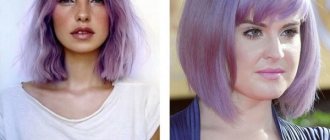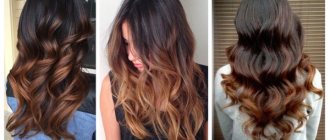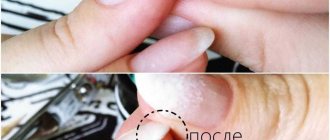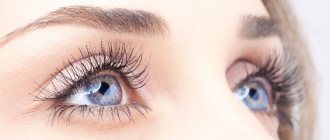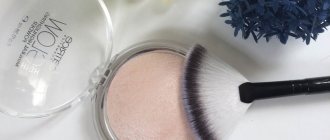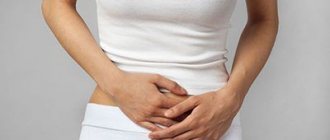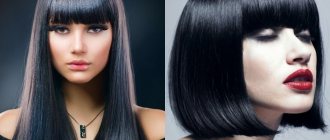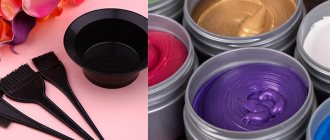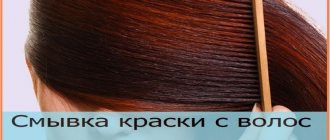Basma for hair: pros and cons
Basma for hair is a green-gray powder obtained from the dried leaves of a plant called indigofera. As a rule, basma is combined with henna to dye hair. In its pure form, it can not make you a brunette, but give a blue or green tone, especially to light hair.
You must be careful with basma.
By the way, on light or bleached hair with basma, you need to be doubly careful. It is worth considering that basma will color thin and porous strands more quickly and more intensely than dense and thick ones. Basma for hair is a very potent dye. After using it, the color may last for several months or may not even wash out at all.

When using basma, it is necessary to take into account the structure and type of hair, its thickness and original shade.
To avoid getting unpredictable results, try dyeing a small section of hair first. And, of course, first do not forget to test for an allergic reaction on a small area of skin - say, on your earlobe or the crook of your elbow.

Ideally, before mixing any natural products and applying them to your hair at home, it is better to consult a dermatologist or trichologist.
Basma for hair: what else is worth knowing before using it?
- You will probably have to tint your strands regularly to keep them from turning bluish.
- After basma, artificial dyes may not act as you expect. If your hair was dyed with basma and/or henna, and then you decided to dye it with chemical dyes in the salon, warn the hairdresser about this nuance. It is very important!
- In order to re-dye hair dyed with basma and/or henna with chemical dyes, you must first wait a while. The colorist in the salon can tell you which one. It is very likely that before chemical staining you will need to undergo a color “washing” or pickling procedure.

There is also a possibility that basma can dry out your hair. Whether this will damage your strands depends on their original structure and condition.
Possible contraindications
There are no contraindications as such in the use of natural dyes, but you should be vigilant. If the hair itself is brittle and thin, then the use of these dyes is not recommended. For a softening effect, you can add kefir, sour cream or essential oils.
The use of natural substances is not recommended for very light hair, as they can give the strands a green-yellow color. It is also not recommended to use natural products after a perm; the curls will even out and the color will not be uniform. It is unlikely that you will be able to repaint with conventional chemical paints after using natural substances. Either the color will not please you, or it will not work at all.
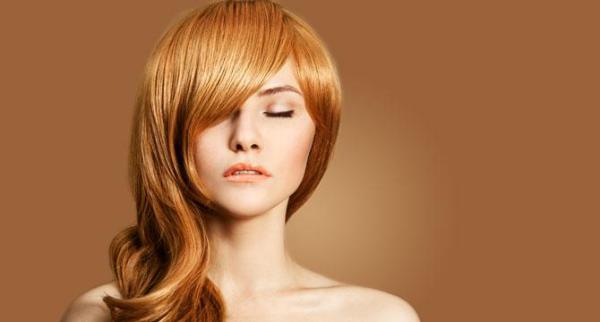
Natural substances do not cause allergies, but before use it is still recommended to test in a sensitive place on the body. Everyone’s body is different, and it’s impossible to predict its behavior. Itching, dryness, and flaking may occur. Usually a small amount of the composition is applied to the inside of the elbow and wait 10-15 minutes.
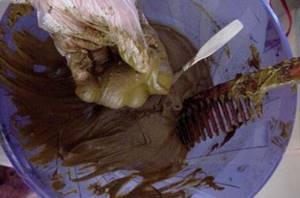
Basma for hair and its benefits
Perhaps one of the main advantages of basma is its natural composition. This dye does not include ammonia and contains beneficial vitamins, acids, minerals, resins and wax. All this can have a beneficial effect on the condition of the hair and scalp.

For example, after basma, hair may become visually thicker and less prone to loss.
On the scalp, basma for hair can heal small wounds and fight dandruff. In addition, curls can become visually thicker, denser and less prone to breakage. Finally, basma allows you to achieve natural dark shades of varying degrees of saturation on your hair.
By the way, if you want to become the owner of super-smooth dark hair, learn how to straighten it beautifully and correctly. To do this, watch the video on our YouTube channel All Things Hair Russia.
It seems that using the iron is quite simple, but do not forget about some nuances. For example, about the use of thermal protection.
Editor's Tip: Heat protectants come in many different forms today. In addition to the products in their video, you can also try Thermal Protection varnish from the Clean Line brand. This product with calendula and UV filters can be applied before styling to protect the strands, moisturize them and style the hairstyle.
Basma and henna: proportions
As mentioned above, most often hair is not dyed with basma in its pure form, but only mixed with henna. To obtain a pronounced chestnut shade, hair basma is mixed with henna in a 1:1 ratio. If you want to become a hot brunette, you should take two parts of basma for one part of henna.
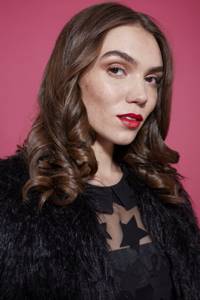
Conversely, if you take twice as much henna as basma, you will get softer honey shades.
Whatever shade you choose, appropriate care will help highlight its richness.
Hair care
Toni&Guy Radiant Brunette Shampoo for dark hair
Jump to Product
Editor's Tip: For example, try Toni&Guy Radiant Brunette Shampoo and Conditioner, designed specifically for dark hair. These products will help give brunettes' hair shine and maintain multifaceted color for a long time.
Hair care
Toni&Guy conditioner for dark hair Radiant Brunette
Go to product
Basma for hair: how to dye your hair?
Henna and basma are mixed with warm water until it becomes liquid sour cream. You can add a little almond, olive or jojoba oil. This will help prevent the strands from drying out and will act as a binding component so that the finished mixture does not drip from the hair.
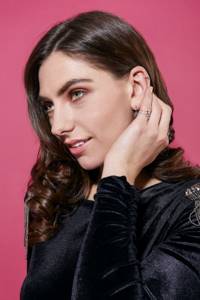
You can always try to become a brunette naturally.
The freshly prepared composition should be used as soon as possible, without leaving it for a long time. Pre-protect your forehead and neck with a bandage or apply a rich cream to your skin to avoid staining it. There is no need to cover your head when dyeing with basma.
Hair basma should remain on the strands from a couple of minutes to several hours, depending on the effect you are looking for. The mixture should be washed off with plain water without shampoo. Over the next two days, the dye will oxidize and darken, only then will you get a completely finished result!
Editor's tip: after dyeing, do not forget to use special products. For example, try TIGI Bed Head Color Goddess Nourishing Mask for Colored Hair. It contains sweet almond oil, pro-vitamin B5 and shea butter. The product helps maintain bright color, nourishes and smoothes the cuticle. The mask softens the hair and gives it incredible shine.
Hair care
Mask for colored hair TIGI Bed Head Color Goddess
Go to product
Neutralizing dark tones
In the case of natural remedies, it is difficult to predict the final result. If the color comes out not so bright, you can repeat the procedure. If it comes out very dark, you will have to do a wash. Natural ingredients will also help correct this situation. Cosmetic and vegetable oils have an effective effect. They wash away pigment well and have a positive effect on curls. How to wash with such components after painting with natural substances? First, you need to wash your hair with shampoo immediately after the coloring procedure.
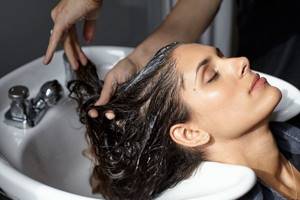
The oil needs to be heated in a water bath and spread on the strands. Leave the mixture on your hair for about an hour. Next, rinse your hair with shampoo. You need to repeat this process 1-2 times a week until the desired shade is obtained.
Vinegar, lemon juice, soda, and kefir can also help remove a very saturated color. You should proceed in the same way as in the situation with oils. In order not to correct the incorrect result of dyeing with natural dyes, it is easier to check the composition on individual strands.
Dyeing with basma at home: recipes
Now you understand the benefits and harms of this natural dye. We also learned how to dye your head with henna and basma. However, there are also coloring recipes with additional ingredients.
Basma with vinegar
In order for basma for hair to dye the spun hair black, and the shade to look exactly like in the “before-after” photo on the Internet, many people use vinegar when dyeing. To prepare, you need to take equal parts of basma and henna. For example, two 30 gram packets of each powder. First you need to apply henna diluted with water to your hair and leave for an hour. After that, for another hour, you need to apply a mixture of basma, water, three tablespoons of vinegar and a teaspoon of salt to the strands. Of course, before experimenting, it is better to try the resulting composition on your skin and make sure that you do not have an allergic reaction to vinegar.
How many natural dyes do you need?
How much painting compound is required depends on the amount of work. In other words, depending on the length of your hair. If your hair is short or medium length, then one pack may be enough. For long ones, it is worth stocking up on a large supply of material. The approximate volume of powder can be taken as follows:
• Short hair – 30-50 grams.
• Medium – 100 grams.
• Long – 400 grams.
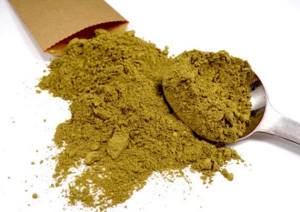
The mixture may remain, but it's better than it running out unexpectedly. You will have to dissolve the product again, but the shade often turns out different. The remaining product can be used to color eyelashes and eyebrows.
